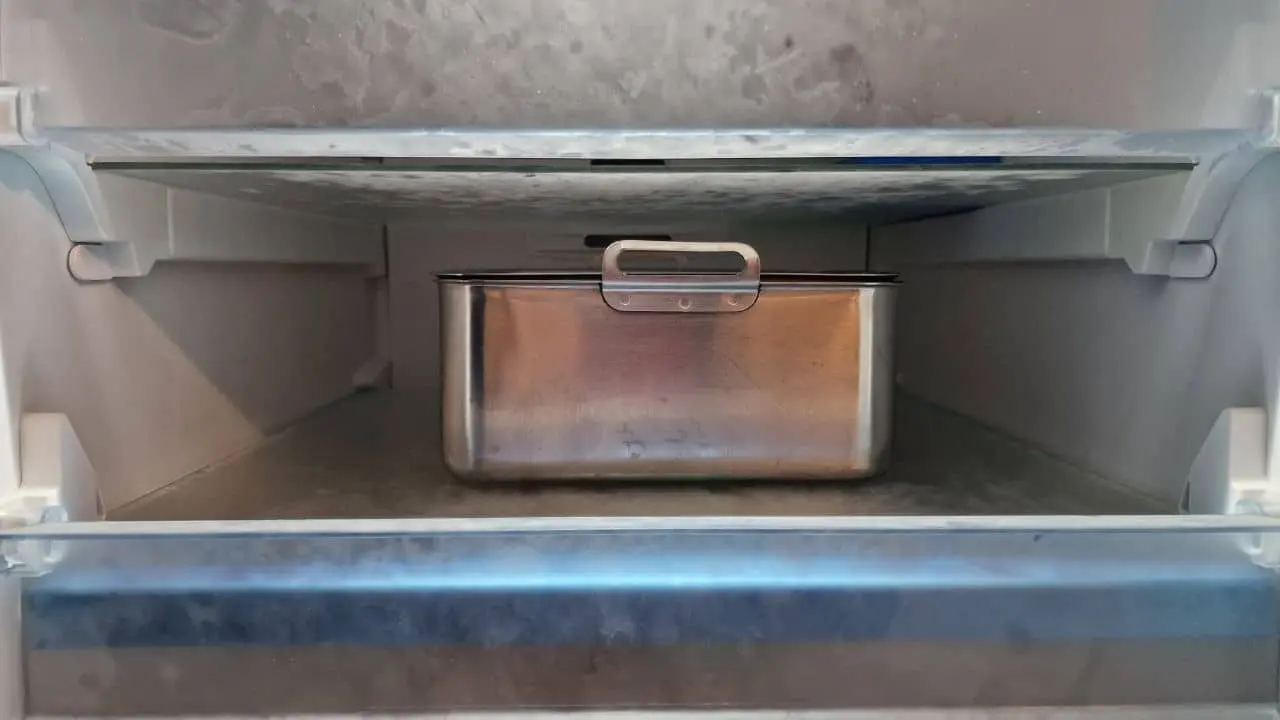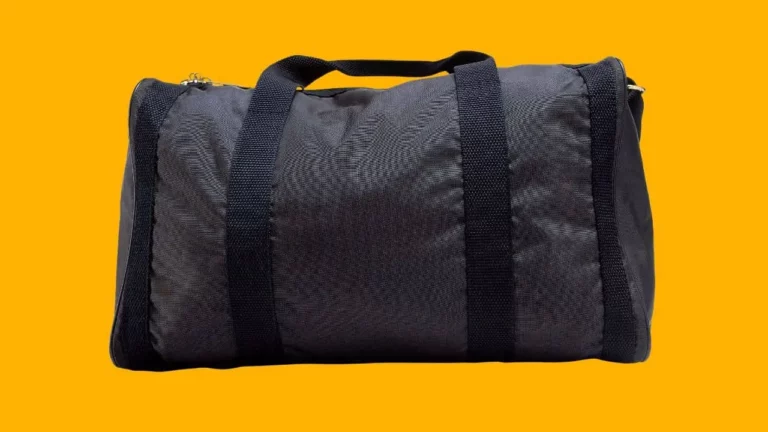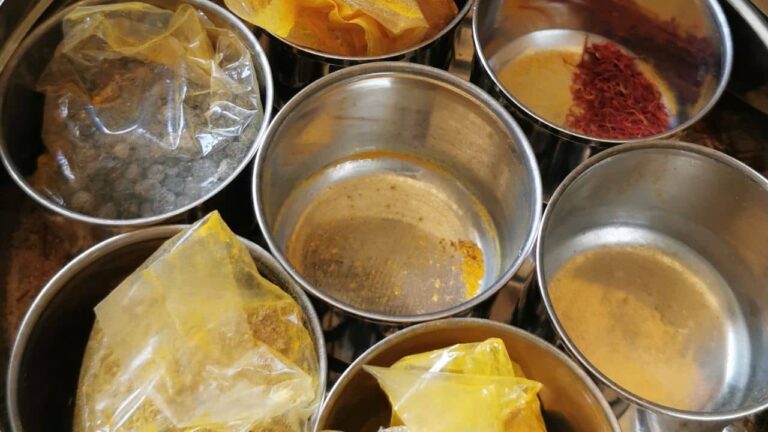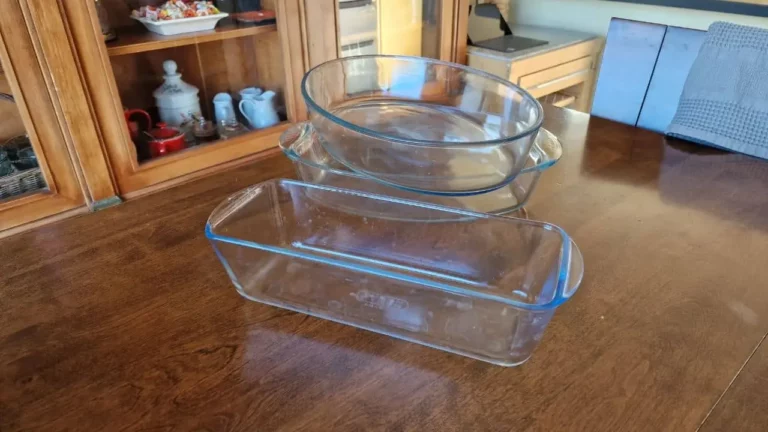Can You Put Metal Containers in the Freezer? (Solved)
When it comes to freezing food, we often think of opting for convenience: using quite practical containers such as those made of plastic or even more fragile ones like glass jars. But what about those made of metal, more specifically those made of stainless steel or aluminum? Are they really suitable for freezing all your favorite dishes?
The answer is YES. Metal containers – stainless steel & aluminum – are perfectly suited for freezing your food. Not only are they hygienic, but they are also convenient to store in your freezer, as you can find them in all sizes and shapes.
Let me now help you better target the metal containers to use and the little techniques to know and use to achieve perfect freezing.
RELATED:
- The 7 Best Materials for Freezing Containers (Including Tips)
- Is It Safe To Store Food In Stainless Steel Containers? (Solved)
Metal Containers in the Freezer: A Practical Guide to Successful Freezing
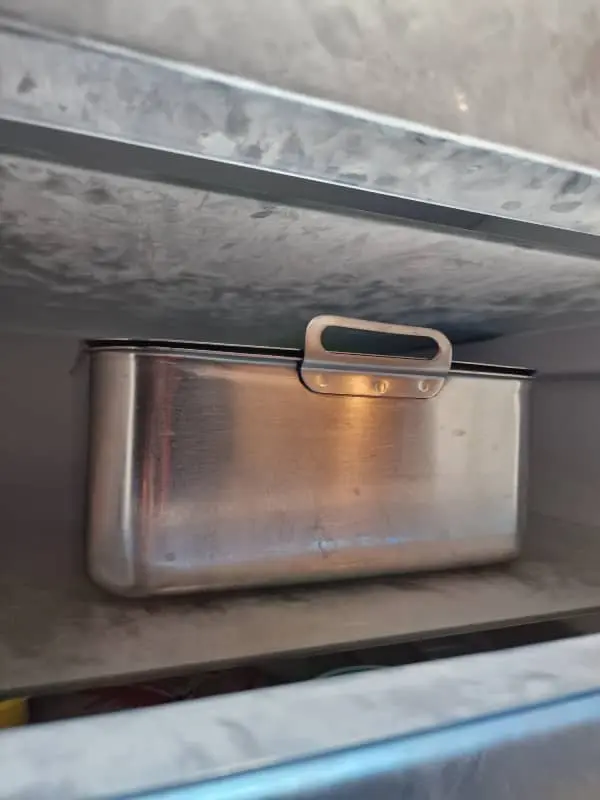
To start, I must emphasize an important detail, even though it may seem trivial to most of you: what are the only types of metals compatible with freezing? They are, of course, stainless steel and aluminum.
Two types of food-grade metals for perfect freezing
Here’s a quick explanation of why these two types of metals are ideal for freezing.
Freezing with stainless steel containers
Stainless steel is the perfect choice for freezing due to its durability and resistance to corrosion. It provides excellent food preservation without transferring flavors or odors. Stainless steel containers also ensure uniform freezing, which helps keep your products fresh for longer.
Freezing with aluminum containers (such as trays)
Aluminum containers, particularly trays, are often used for freezing because of their lightness and thermal conductivity. Easy to use and affordable, these trays ensure rapid cooling and are ideal for freezing individual portions. Their disposable nature also makes them convenient for daily use.
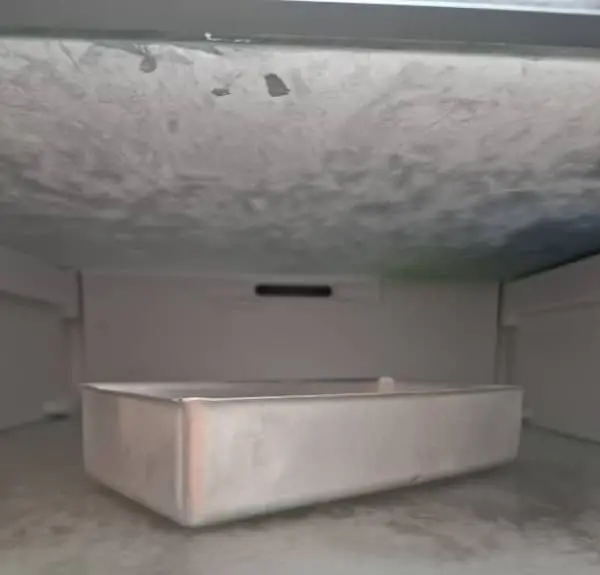
Avoiding rust formation
When using metal containers in the freezer, it’s crucial to avoid rust formation at all costs, as it can compromise the quality of the food you wish to freeze. Note, I’m talking about quality, not toxicity!
To avoid this, it is therefore essential to use food-grade metals such as stainless steel or aluminum. These materials, which are resistant to rust, ensure that your food remains hygienic and safe for consumption.
Did You Know?
According to the U.S. Environmental Protection Agency (EPA), ingesting rust in small quantities is not harmful, except in cases of hemochromatosis. It’s worth knowing that iron oxide is even used as a food coloring and is approved by the FDA. Therefore, there is likely no risk in eating food cooked with rust, although it is not recommended if you have a choice.
Safety aspects of coated or non-food-grade metals
If you decide to freeze your food with other types of metals than those I just mentioned, please read on.
In terms of food safety, not all metal containers are created equal, and other coated or non-food-grade metals may pose a health risk.
That’s why, when choosing a container for freezing purposes, always make sure it is a product that is safe for food and avoid those with dubious coatings. In any case, make sure to use a container that is “Guaranteed Food-Safe.”
Also, be aware that non-food-grade metals such as copper and zinc can also be problematic, as they might react with acidic or alkaline foods, resulting in contamination.
For this reason, I advise you, as I do myself, to use containers made from food-safe materials such as stainless steel or aluminum. These are known to be non-reactive and preserve the quality of all the food we want to freeze.
The Advantages and Disadvantages of Metal Containers for Freezing
Using metal containers for freezing, in my opinion, has more advantages than disadvantages. But let’s examine all of this together!
Advantages
- Durability: Metal containers, such as stainless steel, are very durable and can withstand the cold temperatures of the freezer without breaking.
- Thermal Conductivity: Metal containers excel in conducting heat, meaning that the food stored inside will freeze and thaw more quickly than in other types of containers.
- Aesthetics: Metal containers often have an elegant and modern appearance that can be very attractive.
- Easily Detachable Label: When freezing food, it is necessary to affix a label indicating the type of food and the freezing date. Thus, on a metal container, you will have much more ease in peeling off the label than on a plastic container.
Disadvantages
- Weight: Metal containers usually weigh more than plastic containers, but for my part, I consider this disadvantage to be minor.
- Potential for Freezer Burn: Due to their thermal conductivity, metal containers could increase the risk of freezer burn if not properly sealed. But rest assured, I will give you some tips later to avoid this “burn” disadvantage specifically.
- Difficulty Handling Once Frozen: Although metal containers, such as stainless steel, are known for their durability and longevity, they may not be the perfect choice for the freezer. A primary reason is that metals tend to become very cold, making it difficult to handle or remove them from the freezer without proper protection.
Understanding the Role of Container Size and Style in Freezing
Just like with storage, the size and style of the container play an essential role in efficient freezing.
For these reasons, when I store food in my freezer, I always keep these 2 factors in mind:
- Size: Choosing the right container size is essential to avoid wasting space in the freezer. Small containers are perfect for portion control and storing individual servings, while larger containers can hold more significant amounts of food, like family meals.
- Style: The container’s style is also important when it comes to freezing food. For example, containers with airtight lids are crucial to prevent freezer burn, while stackable designs can save valuable storage space.
Also, be aware that some containers have dividers or compartments, which facilitate the separation and organization of different types of food.
Preparing Food for Freezing in Metal Containers
Earlier in this article, I touched on the subject of “freezer burn” in the “Disadvantages” section. Here are my tips to avoid it.
How to avoid freezer burn
To avoid freezer burn when freezing food in metal containers, follow the first 3 steps below, like I do. The 4th one helps me better organize the freezing of my products to know where I stand.
- Completely cool the food before placing it in the container. Indeed, putting hot food directly into the freezer can cause condensation, leading to freezer burn.
- Wrap the food with a protective layer, such as plastic wrap or aluminum foil, to provide an additional barrier against freezer burn.
- Avoid overfilling the container, as this could cause the food to swell and exert pressure on the lid, making it less airtight.
- Label the containers with the freezing date and content to rotate them and use them in a timely manner.
Proper sealing techniques
Airtight sealing is essential to keep food fresh when freezing them in metal containers. Here’s how I create a secure seal. Feel free to do the same!
- Before placing the lid on the container, I remove any excess air from the container by gently pressing on the food or the protective layer I added.
- I make sure that the container’s edges are clean and free of any food debris that might prevent an airtight seal.
- I place the lid on the container and press firmly on the edges to create a tight seal.
Round vs Rectangular Metal Container: Which is Better?
The choice between a round or rectangular metal container for freezing food will depend on your personal preferences and the available space in the freezer. But between us, both shapes have their advantages:
Round containers
- They allow a uniform distribution of cold air, which can help prevent freezer burn.
- Round containers are more space-efficient for liquids, as the rounded edges reduce the surface exposed to the air.
Rectangular containers
- They are more stackable and can fit tightly together, thereby maximizing freezer space.
- Rectangular containers are ideal for storing pre-portioned meals or stacked dishes, such as lasagna.
Tips for Cleaning and Maintaining Metal Containers
From my experience, metal containers are easy to clean while offering a hygienic solution for storing food in the freezer.
To keep them in good condition, here is my own method for properly maintaining my metal containers (mainly stainless steel).
- Be sure to rinse them thoroughly with hot water as soon as you’re done using them to remove any food residue. You can also soak them in your sink basin if you have more time.
- For a deeper clean, use a soft sponge and mild dish soap to gently scrub the containers. Be sure to avoid abrasive cleaners or metal scouring pads, as they could scratch the surface.
- Make it a habit to dry the container completely with a dishcloth. But if you have a dishwasher, it will do it as well as you can.
Regarding dishwashers, it’s important to note that most stainless steel containers are compatible with them, making cleaning much easier.
However, at the same time, check if the same applies to their respective lids, which may not necessarily be made of the same material. It’s important to verify the manufacturer’s recommendations on this subject to avoid any possible deformation of the lids (due to the high temperature inside the dishwasher).
Personally, to avoid any risk of damaging the container or its lid, I have made it a habit for many years to wash my metal containers by hand to extend their lifespan.
What Are the Best Metal Containers for Freezing?
When it comes to freezing food, I always look for good quality containers that can withstand low temperatures and preserve the freshness of my food.
And between you and me, know that I use both round and triangular shaped metal containers.
Also, when selecting these metal containers for freezing, don’t forget that it is essential to opt for very high-quality stainless steel. Indeed, investing in top-quality stainless steel containers is worth it, as they are more durable and will last you for years.
Here is my favorite brand and its containers that I use every day (feel free to share yours in the comments too):
CUITISAN
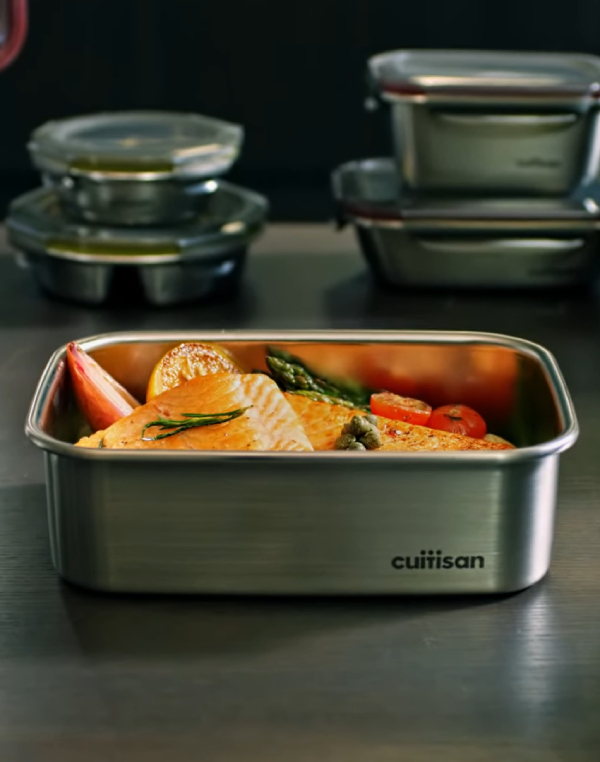
Let me tell you, by investing in the metal containers of this brand, you will not be disappointed!
Judge for yourself:
- High-quality stainless steel: 18/12.
- Freezer/oven/microwave/dishwasher compatible*
- Transparent lids that allow you to see the contents of frozen dishes.
- Stackable
- Round and rectangular shapes
* Cuitisan is the only brand in the world to offer food-grade stainless steel boxes that can be used in both the microwave and the conventional oven up to 400°C (752°F).
👉 See most models on Amazon.com
However, don’t forget that other very good quality stainless steel containers are also available on the market.
Nevertheless, it is crucial to read the product sheet carefully each time. Be sure to check compatibility with the appliances you use (freezer, oven, microwave, dishwasher), the quality of the metal, and other essential characteristics that may influence your choice.
Conclusion
By carefully choosing your metal containers for freezing, you will ensure that they meet your specific needs when it comes to freezing your favorite dishes.
Characteristics such as metal quality, shape, and compatibility with different appliances are essential for optimal performance in preserving your food at low temperatures. Do not overlook these details, as an informed choice will allow you to enjoy your containers for many years without worry.
Freezing is a demanding method, and not all containers are suitable for this use. If you have particular preferences or questions, do not hesitate to seek advice from a specialized seller or read customer reviews online. These sources can offer you valuable information on the best metal containers for freezing.
So, whether you prefer round, rectangular, or even triangular containers, made of high-quality stainless steel, the key is to make an informed choice in line with your freezing needs. This will allow you to preserve your food safely and effectively, ensuring freshness and quality while benefiting from convenient daily use.
Finally, it’s also important to mention the existence of aluminum trays, a common option for freezing.
Personally, I’m not a big fan of these trays, mainly because they are often disposable, which can pose problems in terms of durability and environmental impact.
However, it must be recognized that they are quite convenient for daily use. Lightweight and often equipped with lids, they can be a quick and easy solution for freezing food in individual portions.
But once again, if you’re looking for a long-term, environmentally friendly solution, I highly recommend opting for high-quality stainless steel containers.
Sources

